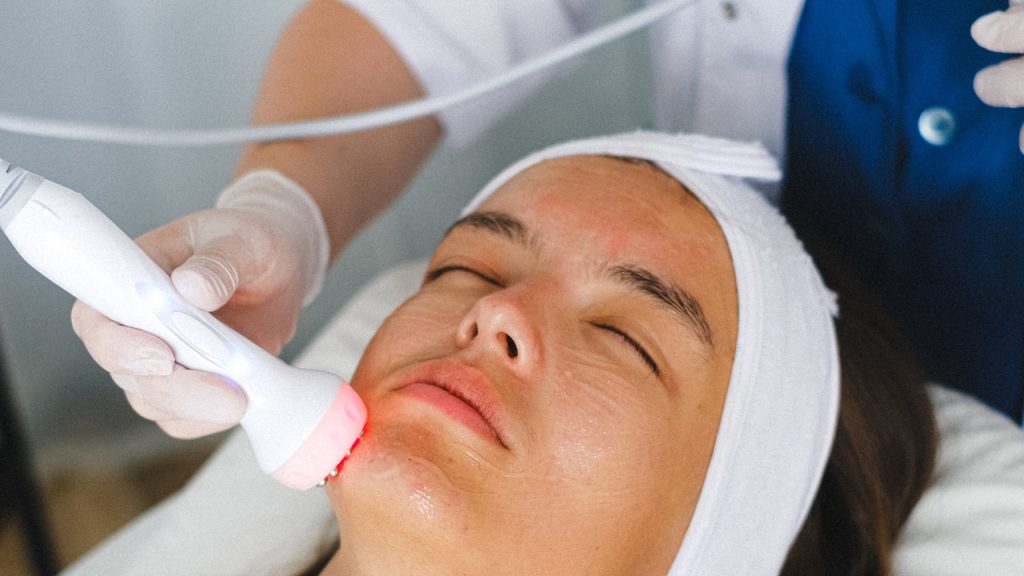
How to Become a Medical Esthetician
Within the esthetician professional field, specialization is nothing new. Whether you’ve chosen to focus on microneedling or waxing, being the best is a strong selling point.
Medical estheticians are in a different league because they’ve built a skill set beyond traditional superficial treatments.
But what is the difference between an esthetician and a medical esthetician? Today, we’re looking at this vital bridge between beauty and medical care. Let’s find out if it’s the right choice for you!
What is a medical esthetician?
Medical estheticians provide services to clients that fall into a clinical category. Under the direct supervision of a medical doctor, they treat complicated skin concerns that aren’t superficial. Usually, they’re working on an issue caused by a medical condition or injury.
Their state must license them to use equipment and procedures beyond the surface. As such, they don’t work in salons. Instead, they’re usually employed in clinics or med spas that have a doctor on staff.
What do medical estheticians do?
While salon estheticians work on healthy skin, sometimes medical estheticians don’t. They’re usually applying similar techniques but on compromised or damaged tissue. Working under a doctor’s direction, they work on skin that’s been scarred, burned, or unhealthy. Clients who’ve just had surgery or are about to may consult with you when they have questions.
You’ll also still perform facials and chemical peels, but there’s an added level of complexity when working with medical clients. Additionally, if you’re a medical esthetician, you can perform laser hair removal and light therapy. Some medical estheticians also do permanent makeup and injections such as BOTOX, lip fillers, and more!
The difference between an esthetician and a medical esthetician
Spa and medical professionals perform many of the same functions. The end goal of helping clients achieve healthy, beautiful skin hasn’t changed.
Because med spas and dermatologists are working with more complex clients, the difference in education is the most important. In most states, a regular esthetician course won’t qualify you for a medical esthetician license.
Beyond that, they can usually work with injectables and Botox, although some states want you to have an RN degree first.
What is the average salary of a medical esthetician?
Based on information gathered nationwide, the average salary of a medical esthetician is around $70,000. However, the number can go much higher depending on your job description and duties. Providing medical-level treatments requires higher levels of education so that you can ask for more than a regular esti.
Especially if you specialize in a treatment modality that’s in high demand, you can expect a higher salary.
How to become a medical esthetician
If this exciting path sounds right for you, here is the roadmap. While it might look the same as other estheticians initially, some crucial differences exist.
1. Graduate high school or complete a GED
All state licensing boards require that estheticians have a high school diploma or GED. Because there’s so much risk to clients, this basic level of education is a must.
Some school districts have started teaching classes that lead to licensure in their high school curricula. When students graduate from these programs, they’re nearly finished with the requirements they must meet to start their careers.
2. Attend a medical esthetician program
There are two paths available to you when deciding your educational course. Sometimes, you’ll want to get your esthetician’s license first. Programs can last anywhere from nine months to a year or more. Alternatively, you can get your associate’s degree from a community college or beauty institute. The only benefit of this choice is that you can work while completing your advanced courses toward becoming a medical esthetician.
Many states allow licensed estheticians to take more courses in their field to achieve a medical esthetician license.
Going into a medical esthetician program might be your best choice. Before enrolling, take some time to identify the program that best meets your needs. They should be accredited and regulated by the state medical board where they’re located. Then, they look similar to a traditional esthetician program but with added course requirements and training.
3. Pass exams and licensing tests
Before being certified, you must pass the exams related to your coursework and your state licensing tests. Ideally, your courses should prepare you for the state tests. If you’re not feeling prepared, make sure you spend time brushing up on topics you’re uncomfortable with.
Once you’ve passed, you’ll get your license to practice as an esthetician.
4. Continue education & get experience in your field
Continuing your education is what makes you an effective medical esthetician. Each area of expertise you can add to your toolbox is one more service you can offer your clients. Additionally, light therapy and injectable manufacturers have CE courses you can take to become certified.
Finding the right med spa or clinic to build your skills is essential. Also, working with clients is the best way to refine complicated techniques, so get your hours in.
5. Grow a base of clientele
Once you’ve established yourself in a community, it’s time to build your client base. If you work in a medical clinic, this isn’t necessary because you’re working directly with physician referrals.
If, on the other hand, you’re working in a med spa as a medical esti, your client list is gold. Work on creating return clients who trust you and value your skills. You can also use tools like social media and a website to develop a wider reach than just your spa. When you offer treatments they can’t get elsewhere, you’ve got a customer for life.
6. Open your own medical esthetics business
When you’ve achieved a level in your career where you can comfortably step out on your own, it’s the best way to build a brand. Research the rules in your state around who can open a med spa. Chances are, you can’t do this on your own.
In most cases, you’ll need a partner who can act as the medical director of your business. In some states, physicians must own the company. In others, they simply have to oversee the medical side of the business. There are several services that can connect you with potential medical directors if you don’t have one.
Once you’ve assembled your team, worked out your business plan, and funded your new enterprise, it’s time to get started.
Bosses in Beauty guides current and future beauty businesses toward success
No matter where you are in your career, Bosses in Beauty is dedicated to your success. After building our business from the ground up, we’ve seen it all. Let our experience and expertise help guide you on the path to a successful med spa or salon.
Check out our website to sign up for coaching and courses. We’ll help you build your dream business, one step at a time!

The
6-Figure Beauty Business Blueprint
An 8-week live program for solo estheticians who want to attract more clients and hit their first six-figures using our proven 6-figure blueprint.

Build Your
7-Figure Team
An 8-week live program for beauty professionals ready to hire, lead and scale their team to seven figures and beyond.

